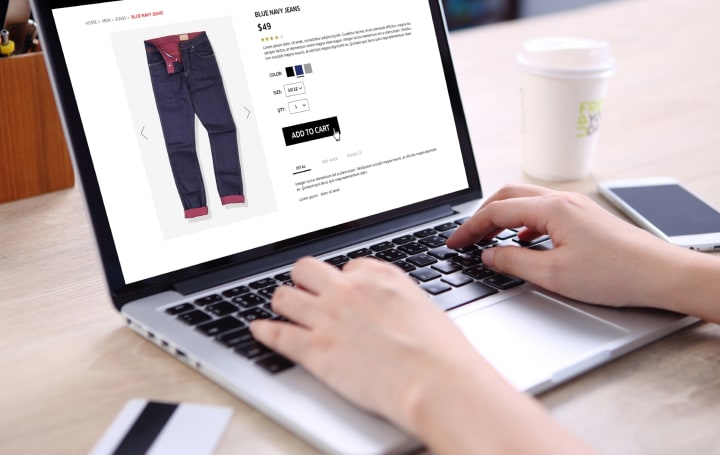How To Scale With Product Line Diversification and Innovation
So, how do you go from being a product-centric business into being a brand? Product line diversification.

You might have had one product that’s seen success on the market; but, one-trick ponies don’t last. A business is not just a product—it's a mission behind a portfolio of products and innovations.
Thus, if you want to scale your business, you need more than a single product. You must become a brand. You need a brand voice, an innovative marketing strategy, and a diverse product line.
So, how do you go from being a product-centric business into being a brand?
Product line diversification.
You can diversify by increasing either product line breadth or product line depth. The former involves adding new products, while the latter entails expanding on or upgrading existing products.
You can go about these two methods by making changes in one of the following five ways: extension, usage, user, lifestyle, and upgrade.
Below, we’ll look at the importance of product line diversification and how you can utilize these diversification strategies to quickly and effectively scale up your business.
How Not To Diversify
Before we get into the right ways to diversify, we need to first look at how not to diversify. There are two mistakes you don’t want to make when scaling up, especially as a small business or Amazon seller.
1. Don’t Change Your Business
You don’t want to reinvent the wheel as a small business. Don’t change your offerings entirely. Don’t expand into new areas that you haven’t operated in before.
Instead, tap into the same market or a similar market, if possible. You’re familiar with the customers, so understanding and marketing to them is easier.
Plus, this helps prove your brand in a given industry and niche. If you jump around too much, you won’t be able to create a cohesive brand image.
(Note that this is true when you're a small or a smaller medium-sized business. Once a large brand is well established, horizontal expansion can be useful to grow offerings.)
2. Don’t Assume
Don’t assume you know what your clientele “wants”. Having one successful product doesn’t mean you have a hold on the market. Assuming your customer’s “wants” can be the biggest mistake companies make, which can quickly lead to financial disaster.
You can think about your customer’s “wants” as a starting point, but it’s not enough. Talk to your audience directly. Ask your customers what they’re looking for in surveys, one-on-one conversations, and feedback.
You need to know their specific pain points before determining how to address them. The best way to do so is to ask.
How To Diversify

There are several benefits to diversification.
You offer an array of options, which is more appealing to your current and prospective clients. This makes you more attractive to the customer and also helps better position yourself in the competitive market.
Diversification also adds additional revenue streams while mitigating the risk of product or industry downturn. If your first product starts losing steam, you’re not frantically trying to find your next product. You begin implementing multiple plans at once, so you never have to look for a “backup” plan.
Ultimately, diversification can boost your brand image and profitability if done correctly.
There are three questions you need to ask in the process of diversification:
- “What do our customers consistently ask for that we don’t provide?”
- “Would this new product/service complement our offerings? Would we be able to upsell or cross-sell easily?”
- “Is this product/service aligned with our brand?”
You’ve considered those three questions, but how do you begin diversifying? There are five means of product diversification to consider for ultimate scaling. We’ll go through each below to see what kind of innovation might work for your business.
1. Product Line Extension
The easiest method of diversifying is by altering your current product’s look slightly. Most do this by adding another color, size, flavor, or style.
This is one of the easiest ways to add another product because your factory/manufacturer already knows how to build it. You only make one small change, which usually doesn’t impact production much.
It also offers the greatest opportunity for repeat purchases and upsells. If someone loves your product in green, they might come back to buy it in red, too.
This can also encourage new prospective buyers. Consumers are more likely to purchase from you if you have multiple color or style options. If a consumer wanted a red vacuum, but you only offered black, they might go elsewhere to buy a red vacuum.
The more style options you have, the greater the opportunity for purchase.
The same is true of size. You want to not only stock up on the sizes that sell out the fastest, but you also want to offer a variety of size options. This is true for bundle sets as well—like providing a three-pack, six-pack, and nine-pack.
You can also offer a variety based on quality. For example, you can create a luxury version of your product with better quality materials or a budget version with lower-quality materials. You can tap into numerous markets at once without significantly changing your production line.
This can also help upsell your customers. They might see the price difference between standard and luxury, and they’ll upgrade to the luxury version because “it’s only $20 more.”
In most cases, these types of extensions are listed as product variations in your storefront.
2. Usage
You can diversify by creating a related product for a different concept. In this case, you make a similar product for a related reason.
This can also include new feature additions as well. For example, you sell a vacuum cleaner with two detachable heads. You may add a third head option for vertical cleaning or an extendable handle. This allows the vacuum to now be used for furniture and ceiling cleaning. This gives the same product a new and related use.
3. User
You can change your target audience for the same product. For example, you sell men’s T-shirts with a design on it. You can move into female T-shirts with the same design.
Another example could be that you currently market your iPhone cases to Millennials. But you might alter your cases to have younger themes that attract the Gen Z consumer as well.
This could also include creating a smaller version for kids, a waterproof version for use outside, or a smaller version for travel.
Altering the audience of your product should not be merely making a pink version for women. In fact, you have to be careful about how you target a new audience. Learn your market without assumption, as marketing with incorrect assumptions can backfire and lead to terrible publicity.
This kind of publicity can kill a brand. Be mindful that you want to ensure you aren’t assuming a new target audience will want a product. You should do the appropriate research in the new market before launch.
4. Lifestyle
You can also create similar products that fit in with the lifestyle that your brand is trying to develop. For example, Under Armour acquired MyFitnessPal. They’re adding this technology to their portfolio because it’s consistent with their health and fitness brand lifestyle.
Choosing products that fit within a lifestyle is a great way to gain a loyal following of a specific audience, too.
For example, Jessica Alba’s The Honest Co. has a line of various eco-friendly home products. The products are all related to the home with the underlying theme of health and environmental consciousness. This creates an image of The Honest Co. that ensures people know precisely the kind of lifestyle and product they’re buying when they purchase from this brand.
5. Upgrade

Your product has seen success for some time, but now sales have started to slow down. It’s important to consider why the sales have slowed down.
Have you maxed out your target market? Have other products come in to take your place? Have your target market’s needs evolved?
In any instance, an upgrade of your product may be able to help you re-enter the market. As your audience uses your product, they start to have more relevant needs. This evolution of your audience calls for an evolution of your product.
Plus, customers love to see “2.0” or “new” on their products. They want the best and hottest items, and these buzzwords inspire that exclusivity and urgency.
This allows you to re-target previous customers who purchased your product by offering a greater version of the product they already love. It also attracts new customers who may be using an older version of a competitor’s product.
Once your new product becomes the star, you can slowly start to scale back the original. This keeps your inventory fresh while optimizing warehouse and production costs.
Conclusion
Don’t let your business die with your product. Product line diversification and innovation is the key to ensuring you are continually scaling and growing. Your audience and market want “new and improved” products consistently.
A diverse portfolio builds a brand with a loyal following.
About the Creator
Seller's Choice
Seller’s Choice is a digital marketing solution provider dedicated to the interests, growth, and profitability of e-commerce brands.






Comments
There are no comments for this story
Be the first to respond and start the conversation.